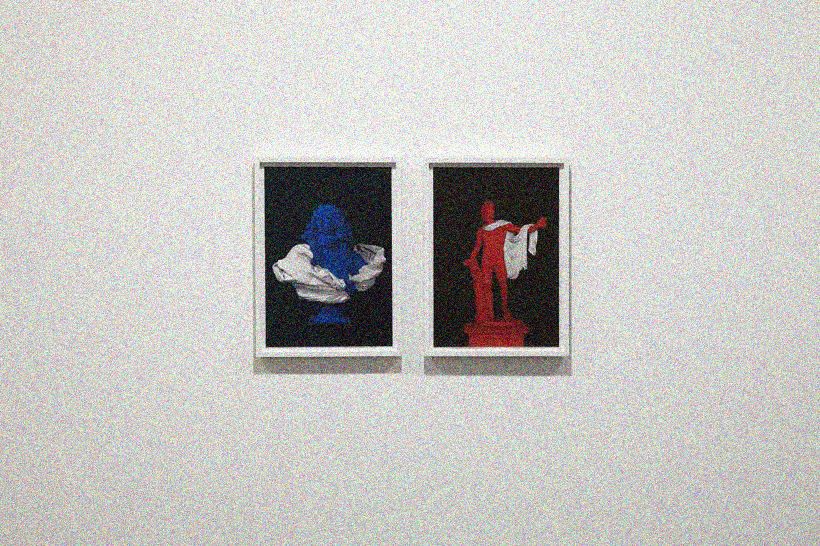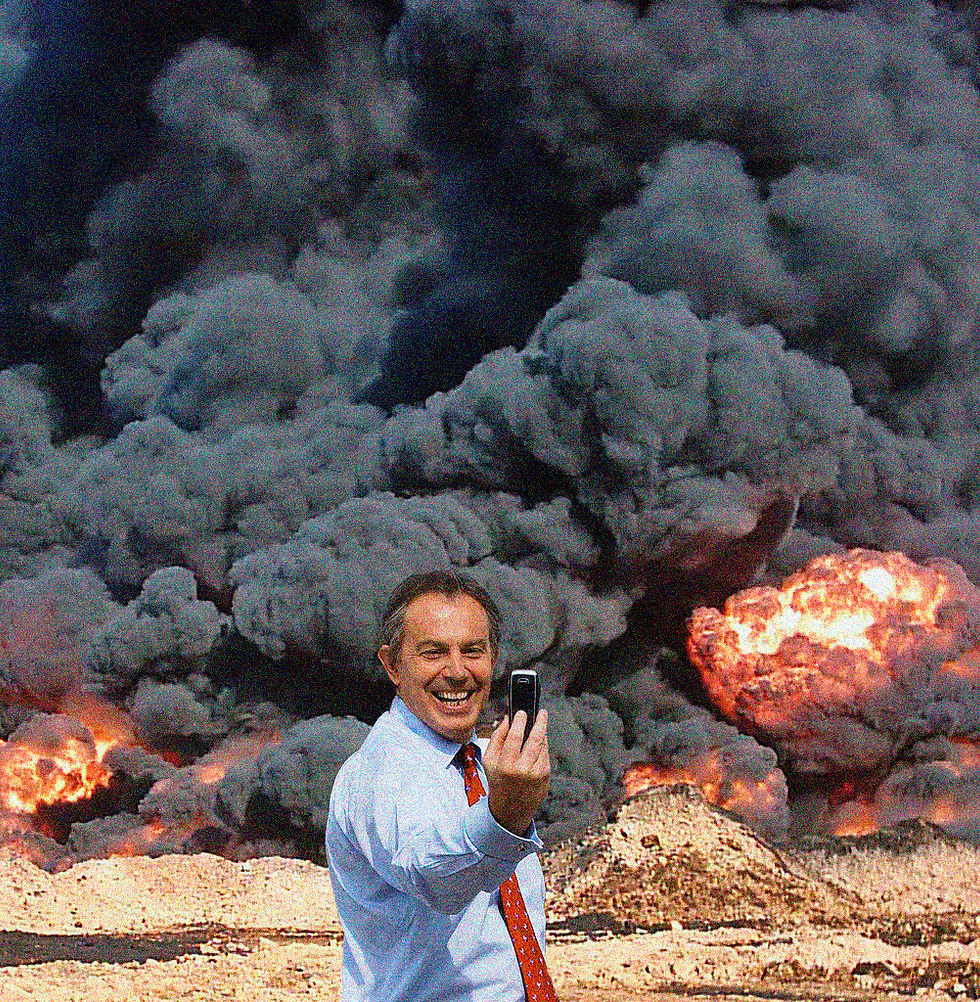Processes & designs - Andrew Lacon & Kennard Phillips
- THE VEIL OF HUMANITY

- Oct 8, 2019
- 2 min read
Updated: May 28, 2020
photomontage /ˌfəʊtəʊmɒnˈtɑːʒ/
noun a montage constructed from photographic images. the technique of constructing a photomontage.

installation view, Andrew Lacon (2015) [Glo colour paint]

photo-op, Kennard Phillips(2005) [photomontage]
Response:
- kennard phillips desings are a process I have used before and are basically what my greek designs have been.
- Andrew Lacon uses colour as a use of identity, gaining inspiration from his coloured images depicting statues of people - very similar to my work
Analysis:
The process of collaging photo's to create a photomontage is an methodology that is used within many of my designs. To create an image, masking layers within photoshop, my influence spurs largely from a collection of art by Andrew Lacon named 'Photo Op'. A definitive piece of artwork that is about the war between Iraq and the USA. The Image, depicting Tony Blair taking a selfie in front of an explosion, was collaged by Andrew Bacon in order to present the monstrous identity of Tony Blair.
"He's maniacal enough for people to believe he actually would be happy photographing an oil explosion." explains Andrew Lacon. This piece especially presents an ironic take on photomontaging, the irony comes from the fact that this famous selfie image of Tony Blair; presenting him with an excited expression on his face, is pasted upon a contradictory, sinister image. The way Andrew Lacon portrays the erratic identity through image placement is a process that I will experiment with and continue to develop on throughout my project, as I believe this represents identity and emotions in a strong, blatant light.
A contrasting process, Giclee screen- prints depicting bright luminous statues painted onto a black background. The prints titled: 'installation view' are part of his 'sculpted image series. The colours themselves refer back to ‘Marble(d)’, and the endpapers of the sort of book this sort of reproduction would originally have appeared in...Lacon had the extravagant tones of Bernini’s Cornaro Chapel in Rome in mind, but there’s also a neat elegance to the way the top of one column refers to the bottom of the other, in much the way a photographic lens produces a negative image. As soon as you notice this there’s suddenly a sense of space being controlled across the gallery, and it becomes a sculptural camera obscura: one empty column is a negative of its solid other, in the senses both of the coloured patterns left by light on film, and the volumetric patterns left on space by sculpture. (thisistomorrow, 2015)
The unity between colour and identity through the use of sculptures of humanity is an interesting concept to me, the colours. used really resemble emotions, for example the two contrasting prints present completely different identities to the sculptures (a harsh red being percieved as anger or warning, whereas the blue portrays sadness or calmness). I will also be experimenting with screen printing and the use of colours to resemble emotions and identity within my upcoming prints.
reflection:
using influence from both artists, I will be using techniques such as photomontages to create graphic designs
continuation of a collaboration between greek statues representing humanity as well as colour to represent identity and emotions
maybe think of other ways to represent masking identity within images?
Sources:
thisistomorrow (2015)
kennard phillips



Comments